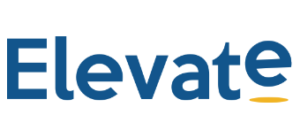Technological breakthroughs and shifting cultural attitudes towards work mean that these are turbulent yet exciting times for the world of recruitment.
As we find ourselves amidst a sea of change and on the cusp of recruitment 4.0, now is the ideal time to take stock of where we are and try to see where we might be going. This type of exercise can help us all to steady the ship and prepare for the future of work.
What Work Will Look Like in 2050
By now, we’ll all have seen several studies that suggest automation could upend many industries and result in mass unemployment. Those studies offer conflicting numbers, though, and we’ll only see the full impact of automation as it makes itself known.
Whatever the extent of the disruption, we can be confident that jobs will indeed exist in 2050. But what will the labour landscape look like by then?
Together, let’s imagine what the world of work might look like in 2050. We’ll wade through some trends and try to grab some of the highlights. Here are some of the key trends that might define the world of work in 2050:
1. Workers will be selected mainly for their decision-making skills
As automation takes hold and manual labour positions are displaced over the coming years, we’ll see countless businesses scramble to find talented decision-makers.
Those professionals will have the necessary tools and abilities to leverage great sets of data to make critical decisions for those high-tech businesses. The skills and techniques of those professionals will empower them to guide enterprises through new territory with confidence.
Wayne Stottler of Kepner-Tregoe suggests that in the future, the skills and techniques of those specialists will need to be replicated across the broader workforce. This will help businesses to solve several unique and diverse business problems better.
2. Team members will adopt multiple roles
Bernard Marr suggests in his Forbes piece that as we move closer to 2050, we’ll see positions become more fluid within organisations. Strict organisational charts will disappear as project-based teams take the spotlight.
This more fluid structure will help businesses to morph and quickly respond to new challenges that emerge over the coming years.
As the concept of a “job for life” continues to recede into the past, Marr expects that we’ll more frequently see professionals work with a host of businesses as a contractor or freelancer before moving onto another role.
3. Unforeseen jobs and opportunities will emerge
A couple of decades ago, it would have been hard to predict the recent exponential rise of small, labour-intensive services. This yearning for small products and experiences that deliver a personal touch mainly came about as a response to mass production.
Interestingly, this piece by Timothy B. Lee over at Cox explores how automation is making human labour itself a mark of luxury. There’s a good chance that as automation continues to take hold, we’ll see novel trends and professions emerge as a result.
New opportunities will also emerge in light of automation. We can expect for robotics engineers and technicians to be in high demand in the coming years, for instance. Mechatronics – the intersection of electrics, mechanics and computerisation – is an exciting field that is projected to experience serious growth.
4. The volume of manual jobs will waver
As automation takes hold, we can expect several manual roles to be replaced. In its future of work in manufacturing report, Deloitte outlines a number of ways that those roles might be restructured or adjusted as we move forward.
Back in 2016, Dan Collier, Director Of Sales Strategy at Elevate, outlined his thoughts about the future of labour in a roundtable discussion hosted by The Guardian about the future of work.
In the discussion, Dan explained that not everybody could be a “knowledge worker”. This means that there will inevitably be lots of unemployment and a “division between the few jobs that need humans, and those that can be automated.”
The future of work and the displacement of workers is currently a pivotal challenge that we all face. Over in the United States, Andrew Yang is bringing attention to this challenge with his “Freedom Dividend” policy. This universal basic income would aim to provide a foundation to protect against mass unemployment.
5. Corporate alumni networks will become a precious resource
“Job-hopping” used to be perceived negatively by some employers, but it’s now becoming the default for many workers. As automation takes hold and businesses employ project-based teams, we can expect this trend to continue.
With workers dipping in and out of different companies, we predict that many businesses will develop robust corporate alumni networks. Those networks will become a valuable resource for companies that will have to rehire outstanding performers with specific skills.
If you want to learn more about corporate alumni networks, we’ve put together these resources for you:
- Why Building a Corporate Alumni Network Makes Sense
- Six Reasons You Should Develop An Alumni Talent Pool
Prepare for the Future with Elevate Direct
As the nature of work continues to evolve, the recruitment industry will need to adjust in parallel. There are exciting times ahead that will undoubtedly be filled with unique challenges and opportunities for forward-thinking recruitment professionals.
Ready to prepare yourself for whatever comes? Be sure to learn more about Elevate and how our AI-powered talent intelligence can help you keep pace with a shifting recruitment landscape.
